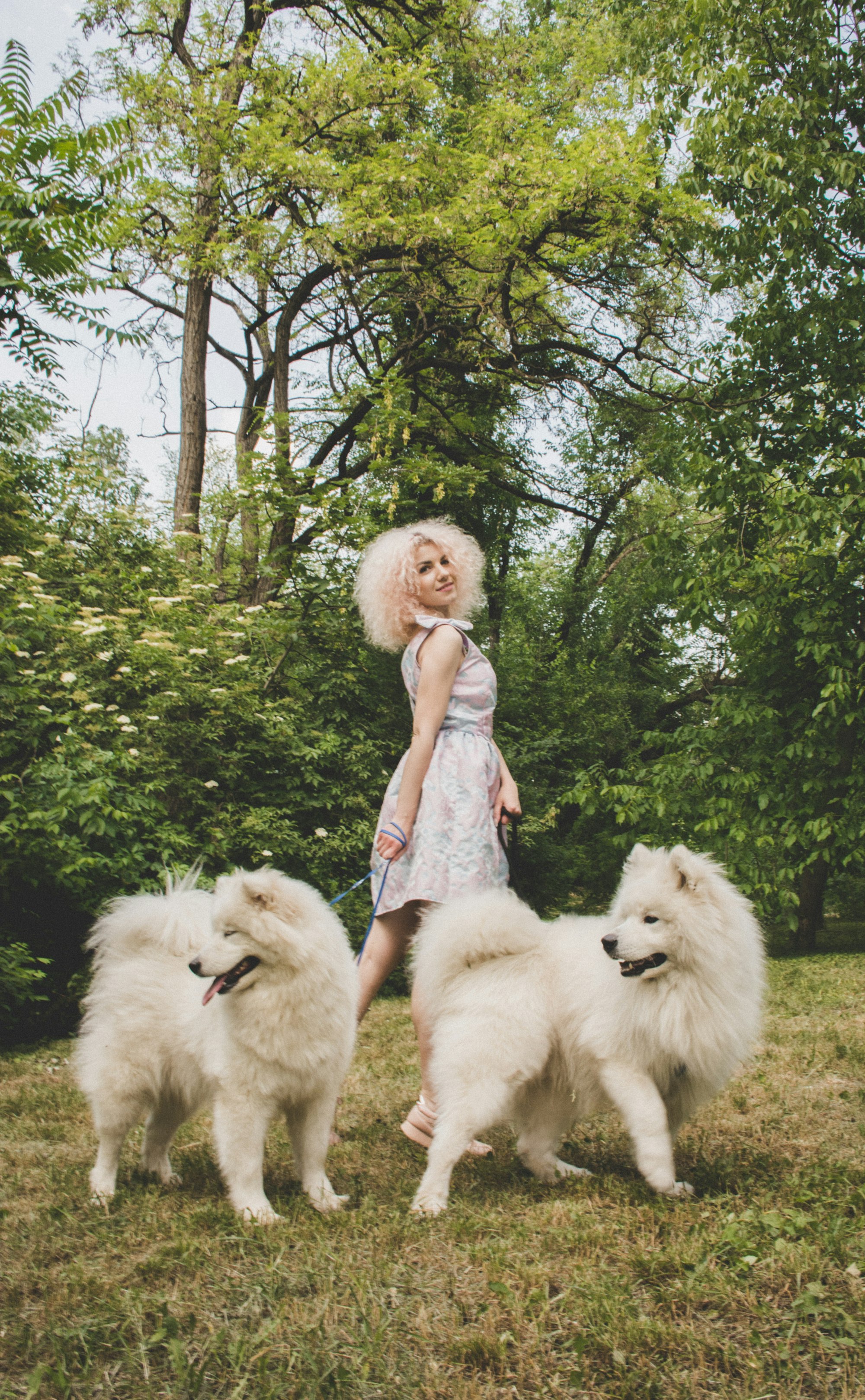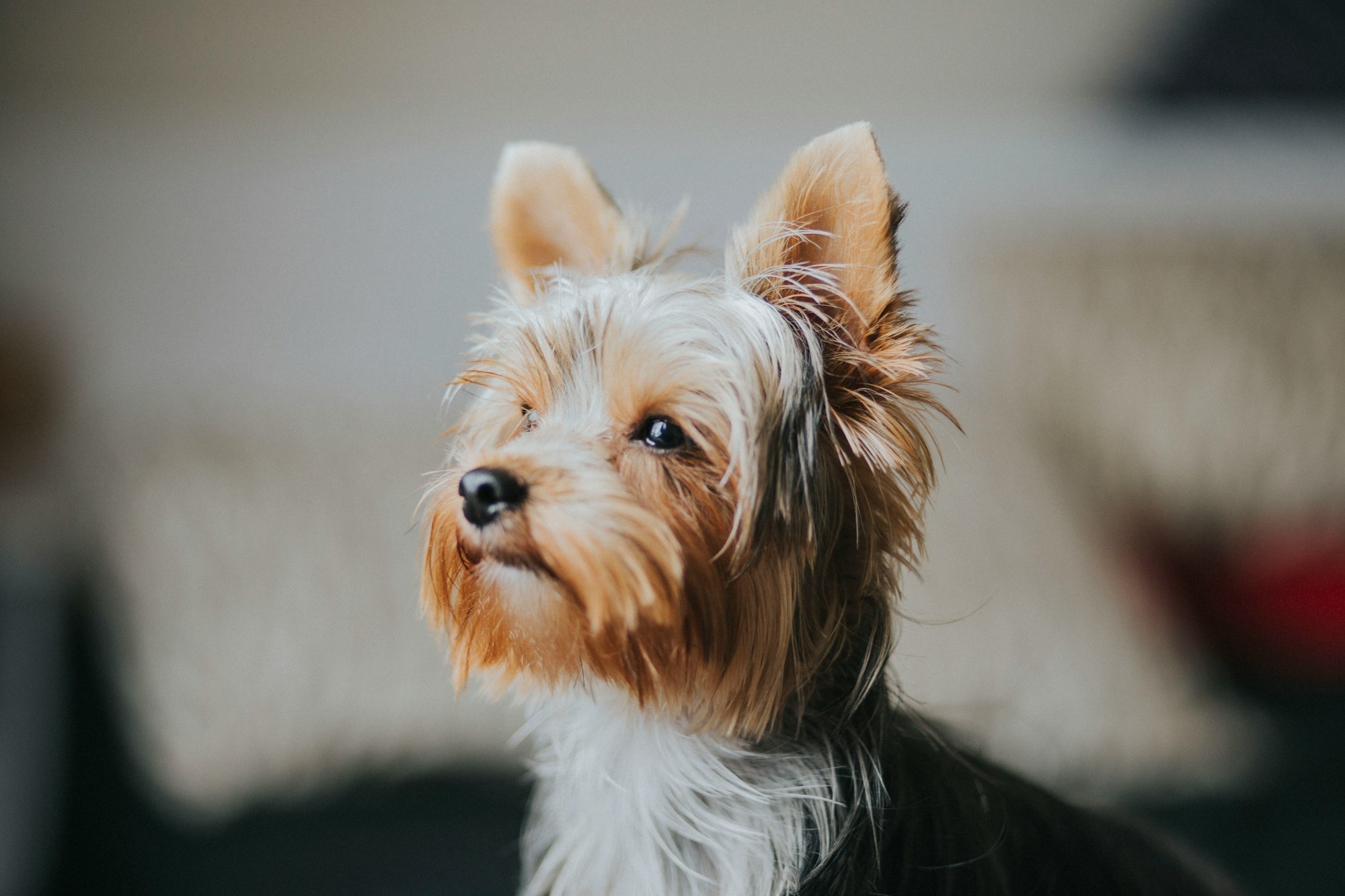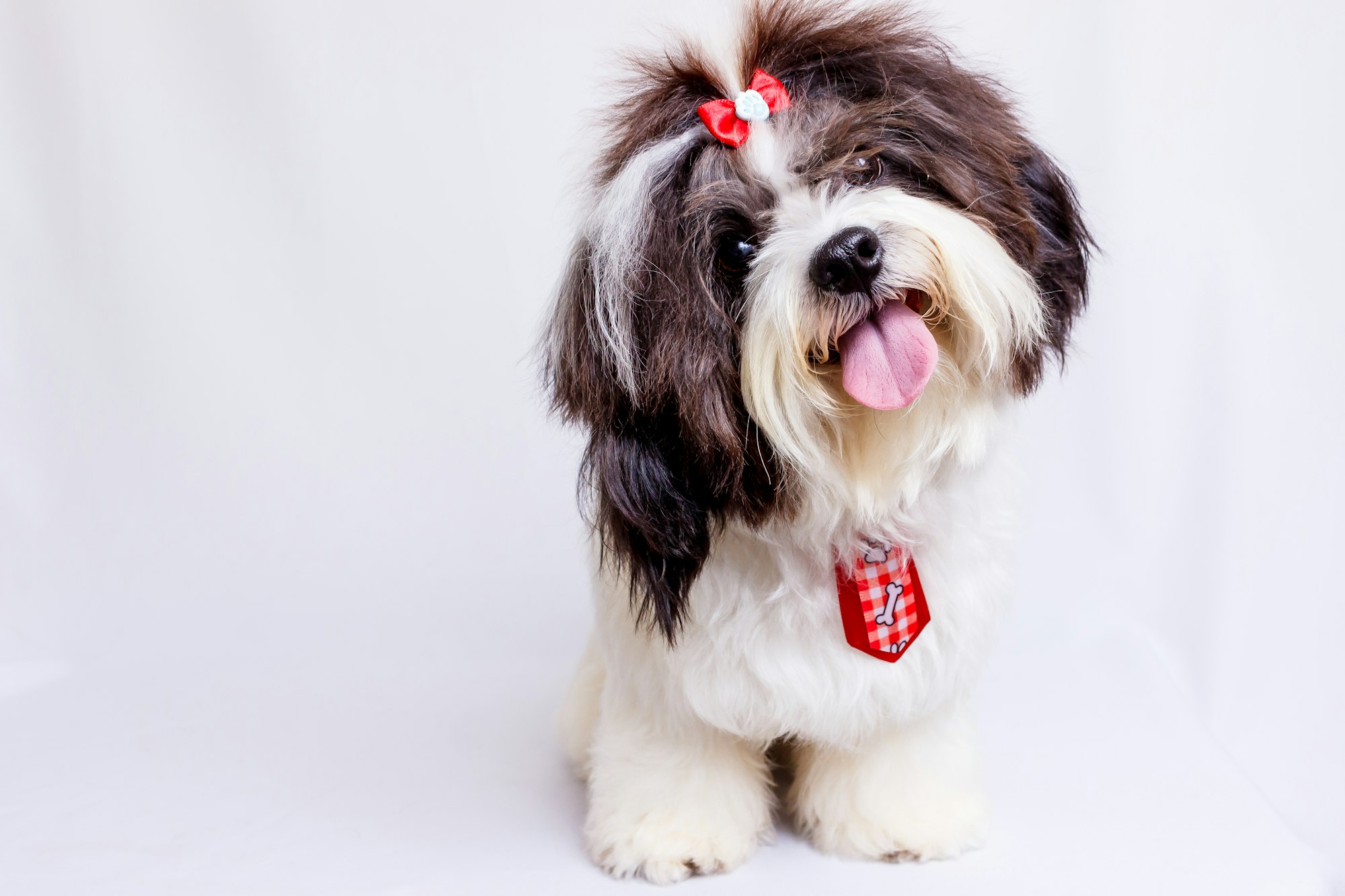We've all been there. Admiring a friend's fluffy canine companion, considering getting one for yourself, and then remembering the tufts of hair that seem to spontaneously appear everywhere in their home. It's no wonder that the appeal of low maintenance non-shedding dogs is on the rise. But what exactly makes these breeds so enticing?

The Allure Beyond the Lack of Fur
For many, the initial draw to non-shedding dog breeds is, understandably, the lack of hair. But delve a little deeper, and you'll find that these dogs often come with a range of other benefits, making them an excellent choice for a variety of households.
The Myth of the "Non-Shedding" Label
Let's clear something up: all dogs shed to some degree. When we talk about "non-shedding" breeds, we're really referring to dogs that shed so little, it's almost imperceptible. These breeds typically have hair, not fur, and it grows much like human hair.
Hypoallergenic Dogs: A Breath of Fresh Air
One of the most significant advantages of non-shedding breeds is their hypoallergenic nature. For those who suffer from allergies, these breeds can be life-changing. While no dog is 100% hypoallergenic, many low-shedding breeds produce fewer allergens than their furrier counterparts.
Dander and Saliva: The Real Culprits
Contrary to popular belief, it's not the hair or fur that most people are allergic to. Instead, it's the dander - or skin flakes - and proteins found in a dog's saliva, urine, and sweat. Hypoallergenic dogs tend to produce less dander, making them more suitable for allergy sufferers.
Low Maintenance? Yes, Please!
The low maintenance aspect of these breeds is undeniable. Without tufts of hair accumulating under your couch or the need for frequent grooming sessions, these dogs are a busy pet owner's dream.
Minimal Grooming: Not Just a Perk
While they may not shed as much, some non-shedding breeds, like the Poodle or Shih Tzu, still require regular grooming to keep their hair in top condition. However, breeds such as the Italian Greyhound or Basenji come with the double benefit of being both low-shedding and requiring minimal grooming.
Small Spaces, Big Hearts
Many non-shedding dogs are on the smaller side, making them perfect for apartment dwellers. Non-shedding small dogs like the Bichon Frise or Maltese provide companionship without overwhelming a smaller living space.
Getting Acquainted: Popular Non-Shedding Breeds
Poodle: The Poster Child
When someone mentions non-shedding dogs, the Poodle often springs to mind. With its curly locks and intelligence, it's a top choice for many.
Yorkshire Terrier: Small but Mighty
The Yorkie might be tiny, but what it lacks in size, it makes up for in personality. Plus, its long, silky hair is more like human hair, making it less prone to shedding.
Schnauzer: A Whiskered Friend
With its distinctive whiskers and playful nature, the Schnauzer is another non-shedding breed that has captured many hearts.
Delving Deeper: The Health Benefits of Non-Shedding Breeds
In addition to the obvious benefits for allergy sufferers, did you know that owning a non-shedding breed might be associated with other health advantages?
Mental Wellness and Companionship
Low maintenance pets, especially those that don't shed, can offer significant mental health benefits. With reduced chores and less time spent on grooming, pet owners often find they have more quality time to bond with their dogs. This strengthens companionship, alleviating feelings of loneliness and boosting mental well-being.
Reduced Indoor Pollutants
Dogs that shed heavily can exacerbate respiratory issues due to increased dander and fur in the air. Non-shedding breeds help maintain a cleaner indoor environment, potentially reducing respiratory problems, especially in those who are more susceptible.
Challenges and Misconceptions: Every Rose has its Thorn
Though the advantages of non-shedding dogs are many, it's essential to recognize and prepare for the challenges they may present.
Regular Vet Visits
While allergy-friendly dogs might reduce sneezing and watery eyes in their human companions, their unique coats or skin may make them more susceptible to certain ailments. Regular vet check-ups are crucial to ensure their health is top-notch.
Not Always Beginner-Friendly
Despite their low-shed nature, some of these breeds might not be suitable for first-time dog owners. Breeds like the Bichon Frise or Kerry Blue Terrier, while non-shedding, can have specific behavioral or training needs that might be challenging for novices.
Expanding Horizons: Beyond Traditional Breeds
The realm of non-shedding dogs isn't limited to just the popular breeds. Hairless dog breeds like the Xoloitzcuintli or the Chinese Crested take the non-shedding trait to the next level. They offer a unique aesthetic and are often a conversation starter, all while keeping your home hair-free.

Making the Choice: Is a Non-Shedding Dog Right for You?
Before taking the plunge and welcoming a non-shedding canine into your home, it's essential to weigh the pros and cons. Every dog, shedding or not, deserves a forever home where they are loved, understood, and cared for.
Lifestyle Considerations
Reflect on your daily routine and living situation. If you travel frequently, have long work hours, or reside in a space not conducive to pets, you might want to reconsider. While non-shedding dogs might be easier to maintain in terms of grooming, they still require attention, training, love, and care.
Budgeting for Your New Furry Friend
Dogs that don't shed may have fewer grooming needs, but they might have other costs. Some breeds are prone to specific health issues, and others might require specialized diets or care products. Ensure you're financially prepared not just for the initial purchase or adoption, but for a lifetime of care.
Non-Shedding Puppies vs. Adult Dogs
While puppies are undeniably cute, they also come with challenges. Training, socializing, and housebreaking a puppy requires time, patience, and consistency. On the other hand, adopting an adult or senior non-shedding dog might offer a smoother transition, as they often come with basic training and a more settled demeanor.
Advantages of Rescue and Adoption
While many people look to breeders for specific non-shedding breeds, don't overlook the potential treasures waiting in shelters. Many mixed breeds exhibit non-shedding characteristics, and rescuing offers the dual benefit of giving a dog a second chance while finding a loyal companion.
Looking Ahead: A Future with Your Non-Shedding Companion
Envision your life five, ten, or even fifteen years from now. Dogs are a long-term commitment. As they age, their needs might change, and they could require more medical care, specialized diets, or modifications to their living environment.
The Journey Begins: Welcoming Home Your New Best Friend
Once you've considered all angles and decided to bring home a non-shedding breed, prepare to embark on one of the most rewarding journeys of your life. The bond between humans and their pets is profound, filled with moments of joy, laughter, challenges, and growth. Whether you're playing fetch in the park, taking a quiet evening stroll, or simply cuddling on the couch, the love and companionship of your non-shedding dog will be a constant source of happiness. Embrace every moment, and treasure the memories you'll create together.

Integrating Your Non-Shedding Dog into Your Home
The first few weeks with your new non-shedding companion can set the tone for your relationship. Making sure this transition period is smooth will help in fostering a bond that lasts a lifetime.
Setting Up Their Space
Every dog, whether shedding or non-shedding, needs a space they can call their own. This can be a comfy corner with a dog bed, some toys, and maybe even a crate if crate training is in the plan. This personal space will help them feel secure and give them a place to retreat when they need some quiet time.
Dietary Needs and Health Concerns
Understanding the dietary needs of your specific breed is crucial. While some might thrive on commercial dog food, others might require a more specialized diet to address breed-specific health concerns or to maintain their coat's health.
Regular Exercise and Mental Stimulation
Just because your dog doesn't shed doesn't mean they won't need regular exercise. Keeping them physically and mentally engaged can prevent behavioral issues. Depending on the breed, this can range from daily walks to more intense activities like agility training or fetch sessions.
Socializing Your Non-Shedder
Socialization is vital, especially if you've brought home a puppy. Exposing them to different environments, people, and other animals in a controlled manner can ensure they grow up to be well-rounded and sociable adults.
Training and Discipline
Consistent training is the key. Whether it's basic commands or house manners, ensuring that your dog understands what's expected of them will lead to a harmonious coexistence. Remember, positive reinforcement techniques are often more effective and help in building trust.
Grooming: Beyond Just Hair Concerns
While non-shedding dogs might not leave tufts of hair around your home, grooming is still a significant aspect of their care. Regular baths, nail trims, and ear cleanings should be part of the routine. For breeds with longer hair, like the Poodle or Yorkshire Terrier, regular haircuts might also be necessary.

In Moments of Challenges: Seeking Support
While the journey with your non-shedding companion will be filled with joyous moments, challenges might arise. Whether it's health issues, behavioral concerns, or training hurdles, remember, you're not alone. Seeking advice from fellow dog owners, trainers, or veterinarians can offer solutions and provide support.
Cherishing Every Moment: A Bond Unbreakable
The appeal of low maintenance non-shedding dogs extends far beyond the lack of hair. It's about the experiences, the learning curves, the moments of pure joy, and even the challenges. Every moment with your furry friend adds a chapter to the story of your shared life. Cherish them, learn from them, and know that in your dog's eyes, you're their world. And in return, they become an irreplaceable part of yours.
The Legacy of Low Maintenance Non-Shedding Dogs
As the appeal of non-shedding dogs has grown, so too has the legacy of these breeds. Their influence can be seen not just in homes but also in popular culture, therapeutic settings, and the ever-evolving world of dog breeding.
The Pop Culture Phenomenon
Non-shedding breeds like the Poodle, Shih Tzu, and Maltese have often graced the silver screen, charmed audiences in books, or even made headline news with celebrity owners. Their adorable appearance, coupled with their low-shed nature, has made them darlings of the entertainment world.
Therapeutic Companions
Given their hypoallergenic nature, non-shedding breeds have found a significant place in therapeutic settings. They've become popular as therapy dogs in hospitals, elder care facilities, and schools. Their presence can offer comfort without the concern of allergic reactions for those they're assisting.
Ethical Breeding and Adoption
As the demand for non-shedding breeds rises, so does the importance of ethical breeding. Potential owners should be cautious and do thorough research before purchasing a puppy. Ensuring breeders follow responsible practices can help avoid supporting puppy mills or unscrupulous operations. Moreover, always consider adoption. Many non-shedding dogs, or mixes that carry the trait, await loving homes in shelters.
Innovations in Breeding: The Rise of Designer Dogs
With the rise in popularity of non-shedding breeds, breeders have experimented, resulting in the birth of various "designer dogs." Breeds like the Labradoodle (Labrador and Poodle mix) or the Cockapoo (Cocker Spaniel and Poodle mix) combine traits of two different breeds, often aiming to retain the non-shedding quality.
A Lifelong Commitment: Beyond the Novelty
While the benefits of non-shedding dogs are numerous, it's essential to remember that bringing a dog into your home is a lifelong commitment. It's not just about the convenience of less hair or fewer allergies. It's about being prepared for a journey filled with responsibilities, challenges, and, most importantly, unconditional love.
As you navigate the world of low maintenance non-shedding dogs, let the lack of shedding be a perk, but not the sole reason for your choice. After all, at the heart of every decision should be the welfare of the dog and the bond you're about to forge – a bond that promises to be one of the most enriching experiences of your life.
Conclusion:
In the vast world of canine companions, the allure of low maintenance non-shedding dogs is undeniable. Beyond the obvious benefits of a hair-free home and reduced allergens, these breeds offer unique personalities, histories, and traits that captivate hearts. However, it's crucial to approach ownership with a holistic perspective. From understanding breed-specific needs, ensuring ethical adoption or purchase, and acknowledging their growing influence in pop culture and therapy, to recognizing the commitment that goes beyond the absence of shedding—every potential owner should be well-informed. Embrace the journey with these special breeds, cherishing every moment and the unbreakable bond you'll form.
Frequently Asked Questions (FAQs)
1. What does "non-shedding" mean when it comes to dogs?
Non-shedding dogs have a coat that doesn't shed hair in the same way that other breeds do. However, no dog is entirely non-shedding. These breeds typically shed less, leading to fewer allergens and less hair around the home.
2. Are non-shedding dogs hypoallergenic?
While no dog is completely hypoallergenic, non-shedding breeds tend to produce fewer allergens, making them a preferred choice for individuals with allergies.
3. Which are some popular low maintenance non-shedding breeds?
Popular non-shedding breeds include the Poodle, Shih Tzu, Maltese, and Bichon Frise, among others.
4. Do non-shedding dogs require grooming?
Yes, non-shedding dogs often require regular grooming. Their hair can grow continuously, much like human hair, and may need trimming, along with regular baths and nail care.
5. Are there any health concerns unique to non-shedding breeds?
While non-shedding breeds aren't prone to specific health issues solely because of their coat type, individual breeds within this category might have breed-specific concerns. It's essential to research each breed individually.
6. Are non-shedding dogs suitable for families with children?
Absolutely! Many non-shedding breeds are known for their gentle temperament and get along well with children. However, always ensure early socialization and teach children proper pet interaction.
7. Do non-shedding dogs need as much exercise as other breeds?
Exercise needs vary from breed to breed. While their shedding pattern doesn't directly relate to energy levels, it's essential to understand the exercise requirements of the specific non-shedding breed you're considering.
8. How can I adopt a non-shedding dog?
Many rescue organizations and shelters have non-shedding breeds or mixes available for adoption. Research and connect with local rescues or look for breed-specific organizations.
9. Are "designer dogs" like Labradoodles considered non-shedding?
Many designer breeds, like the Labradoodle, were created by combining breeds, often with the intent to retain the non-shedding characteristic. However, it's essential to note that not all designer dogs will be non-shedding, as it depends on their genetic makeup.
10. Is training different for non-shedding breeds?
Training largely depends on the individual dog and breed temperament rather than their shedding characteristics. Non-shedding breeds can be just as eager to please and trainable as any other breed.




